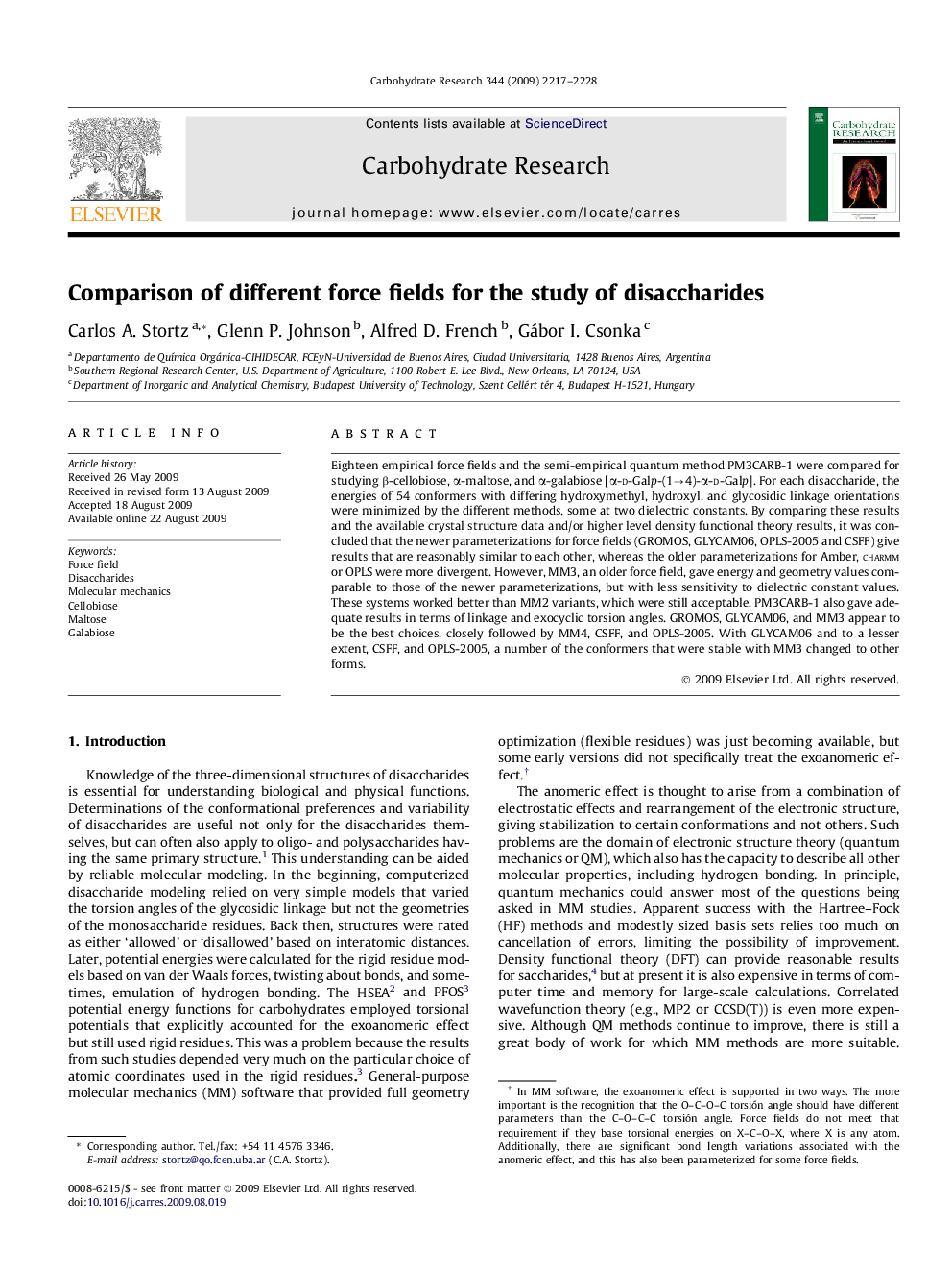| Article ID | Journal | Published Year | Pages | File Type |
|---|---|---|---|---|
| 1390704 | Carbohydrate Research | 2009 | 12 Pages |
Eighteen empirical force fields and the semi-empirical quantum method PM3CARB-1 were compared for studying β-cellobiose, α-maltose, and α-galabiose [α-d-Galp-(1→4)-α-d-Galp]. For each disaccharide, the energies of 54 conformers with differing hydroxymethyl, hydroxyl, and glycosidic linkage orientations were minimized by the different methods, some at two dielectric constants. By comparing these results and the available crystal structure data and/or higher level density functional theory results, it was concluded that the newer parameterizations for force fields (GROMOS, GLYCAM06, OPLS-2005 and CSFF) give results that are reasonably similar to each other, whereas the older parameterizations for Amber, charmm or OPLS were more divergent. However, MM3, an older force field, gave energy and geometry values comparable to those of the newer parameterizations, but with less sensitivity to dielectric constant values. These systems worked better than MM2 variants, which were still acceptable. PM3CARB-1 also gave adequate results in terms of linkage and exocyclic torsion angles. GROMOS, GLYCAM06, and MM3 appear to be the best choices, closely followed by MM4, CSFF, and OPLS-2005. With GLYCAM06 and to a lesser extent, CSFF, and OPLS-2005, a number of the conformers that were stable with MM3 changed to other forms.
Graphical abstractFigure optionsDownload full-size imageDownload as PowerPoint slide
